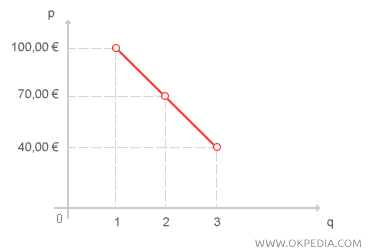Demand
Demand is the amount of an economic good that an individual or business is willing and able to buy at a certain market price at a specific point in time. It stems from economic needs, which are essentially human desires that can be met through the purchase of goods. However, it’s essential not to confuse demand with economic need. Demand specifically refers to the quantity of goods that a person’s financial means allow them to purchase at the current price in the market. Needs that cannot be met due to financial limitations are not included in the calculation of demand. In economics, demand is divided into two primary categories.
- Individual Demand. This is the amount of a good that a single economic agent (consumer) is willing to buy at a given market price. It’s a concept mainly used in microeconomic analysis.
- Market Demand. Market demand refers to the total quantity of a good that all participants are willing to purchase based on its price. It contrasts with individual demand, which focuses on the quantity requested by a single buyer.
- Aggregate Demand. Aggregate demand is the total demand for economic goods from a group of entities (such as households or businesses) within an economy. This concept is particularly relevant in macroeconomic studies.
To create a demand schedule, an economic agent, usually a consumer, is surveyed to find out the prices they are willing to pay for different quantities of a product. For example, what would you pay for the first unit of the good? And for the second or third? The answers form a demand schedule that shows the quantities a consumer is willing to buy at various price points.

According to the law of diminishing marginal utility, demand prices fluctuate based on the quantities consumed. The first unit of a product provides a higher marginal utility compared to the second, so it has a higher demand price. Generally, as the quantity consumed increases, the demand price decreases. The demand schedule can be plotted on a graph with quantities on the x-axis and prices on the y-axis, forming what’s known as the demand schedule or the demand curve.

Therefore, demand (q) is a function of price (p). According to the law of demand, as the price of a good increases, the quantity demanded decreases, and vice versa. On a graph, the demand curve slopes downward (f'<0), indicating a negative gradient throughout.
